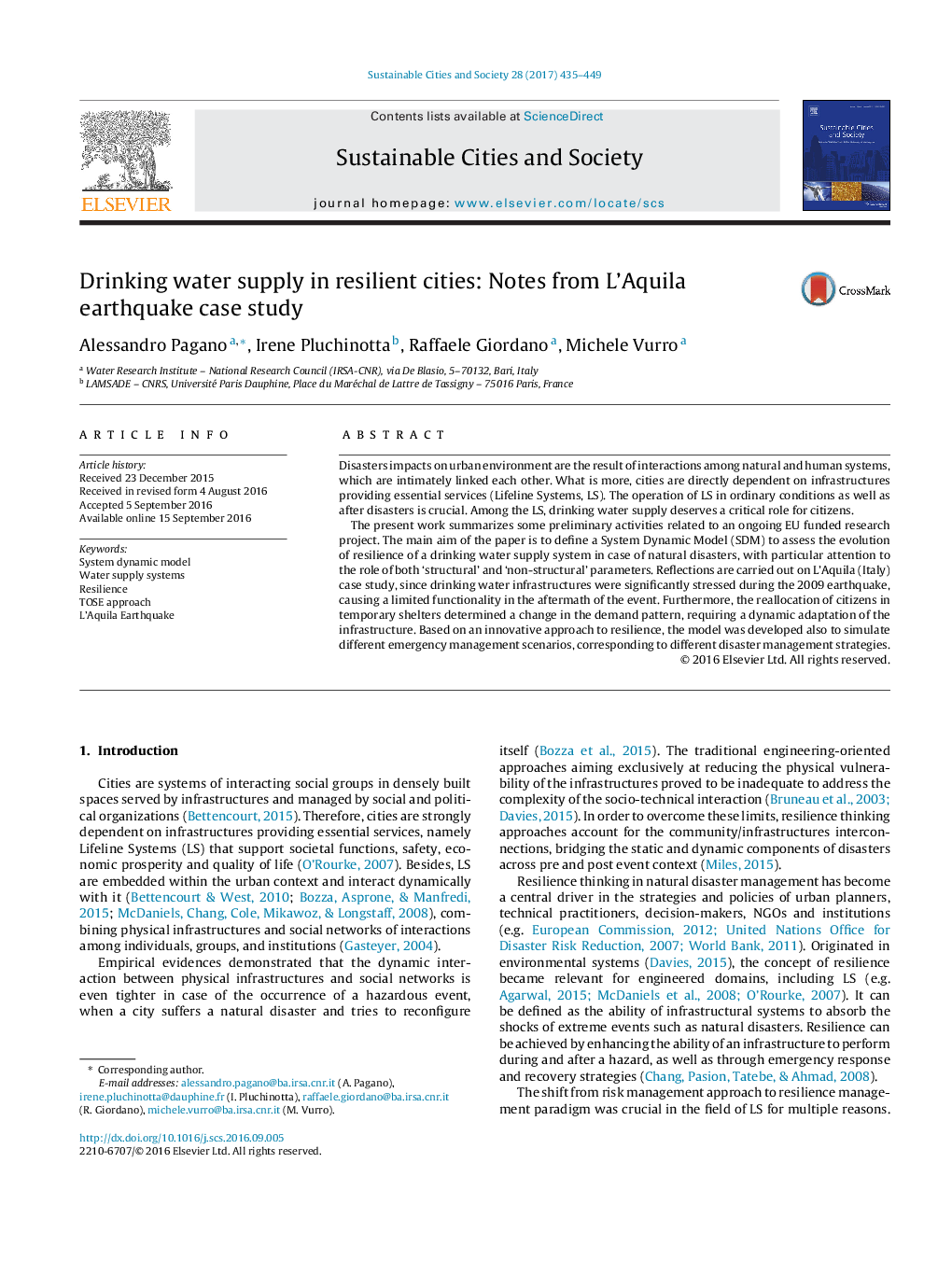| Article ID | Journal | Published Year | Pages | File Type |
|---|---|---|---|---|
| 4928205 | Sustainable Cities and Society | 2017 | 15 Pages |
â¢A model for resilience assessment of drinking water supply systems is proposed.â¢Resilience is modeled in its multi-dimensionality (TOSE approach).â¢SDM is used for dynamically modelling resilience during and after a natural disaster.â¢An application is proposed through the L'Aquila earthquake (2009) case study.
Disasters impacts on urban environment are the result of interactions among natural and human systems, which are intimately linked each other. What is more, cities are directly dependent on infrastructures providing essential services (Lifeline Systems, LS). The operation of LS in ordinary conditions as well as after disasters is crucial. Among the LS, drinking water supply deserves a critical role for citizens.The present work summarizes some preliminary activities related to an ongoing EU funded research project. The main aim of the paper is to define a System Dynamic Model (SDM) to assess the evolution of resilience of a drinking water supply system in case of natural disasters, with particular attention to the role of both 'structural' and 'non-structural' parameters. Reflections are carried out on L'Aquila (Italy) case study, since drinking water infrastructures were significantly stressed during the 2009 earthquake, causing a limited functionality in the aftermath of the event. Furthermore, the reallocation of citizens in temporary shelters determined a change in the demand pattern, requiring a dynamic adaptation of the infrastructure. Based on an innovative approach to resilience, the model was developed also to simulate different emergency management scenarios, corresponding to different disaster management strategies.
